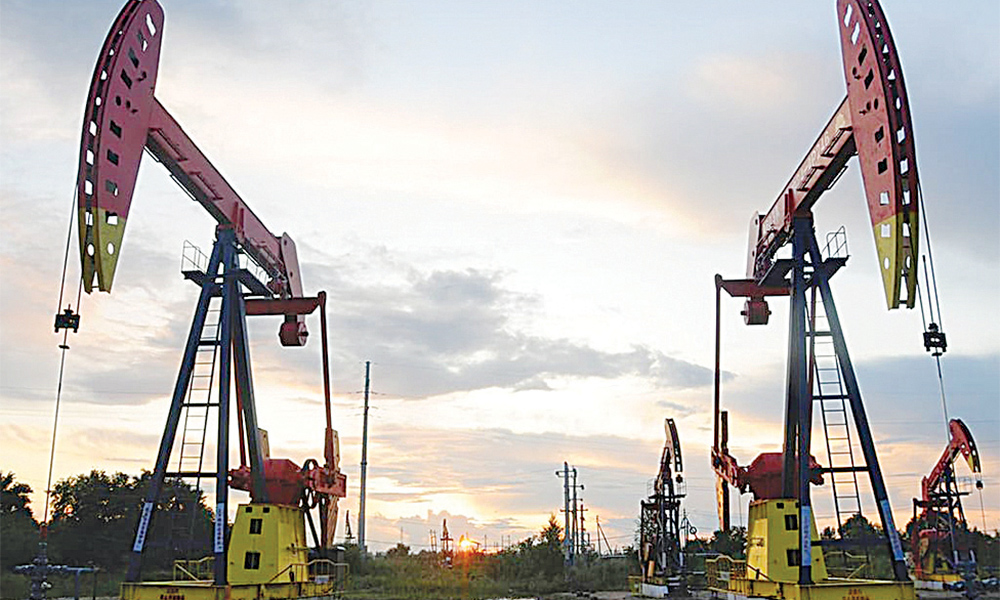LONDON: The world’s top oil-producing countries will meet tomorrow to discuss a further increase in output, while crude prices have reached seven-year highs rattled by geopolitical tensions. Part of their regular meetings since the COVID-19 pandemic shook markets, the 13 members of the Organization of the Petroleum Exporting Countries (OPEC) and their 10 allies convene by videoconference to set output. Many analysts expect the grouping, including Saudi Arabia and Russia, to decide to continue to boost output by 400,000 barrels per day in March.
This will be in line with their strategy to slowly re-open the taps since May last year, after drastic cuts to curb slumping prices when the coronavirus first started spreading. "With that said, we wouldn’t completely rule out a larger increase, given high oil prices and recent OPEC+ underproduction,” Capital Economics analysts said. Brent oil on Wednesday surpassed $90 per barrel, attaining a level last seen in October 2014. The price of West Texas Intermediate (WTI) crude hit its highest level in more than seven years earlier this month, fuelled by easing concerns about the Omicron COVID variant and geopolitical tensions.
Russia sanctions?
The United States and Britain on Sunday flagged new and "devastating” economic sanctions against Russia, as Washington and its NATO allies step up efforts to deter any invasion of Ukraine. Fears of an imminent invasion have grown in recent days, despite denials from Moscow and pleas from Ukraine’s president to avoid stirring "panic” over the massive Russian military build-up on the border. A Russian invasion of Ukraine would lead to "very hard sanctions” against Moscow, according to Bjarne Schieldrop, analyst at SEB. "It would halt exports of natural gas to Europe even more. Natural gas and power prices in Europe would be much higher than the current extremely high prices we have now,” he said. In the Middle East, Yemen’s Iran-backed Houthi rebels-which have frequently targeted Saudi Arabia-launched two missile attacks on the United Arab Emirates this month.
Struggling to meet targets
Besides the geopolitical uncertainties, analysts have noted that OPEC nations and other key producers are struggling to meet targets to lift output by 400,000 barrels a month, adding to the upward pressure on prices. "OPEC+ underperformance and inaction support elevated oil prices as the group has underdelivered against its stated production targets by hundreds of thousands of barrels,” Rystad Energy analyst Louise Dickson said. The grouping "has committed to a passive role in the conversation despite external pressure primarily from the US, to increase production and ease fuel prices,” she added. Schieldrop also noted that top producer Saudi Arabia in the last meeting "made it clear that they will not step up production beyond their cap to cover losses by other members. No rescue there.”
Meanwhile, demand for natural gas is expected to fall sharply in Europe and slow in Asia this year as prices have rocketed to record heights, the International Energy Agency said yesterday. Gas demand rebounded last year as the world economy recovered from the COVID pandemic and restrictions were eased, while an unusually cold winter also drove up consumption, the Paris-based IEA said. "Supply did not keep pace which, combined with unexpected outages, led to tight markets and steep price increases, putting the brakes on demand growth in the second half of 2021,” the agency said in a report. Consumption grew by 4.6 percent last year, more than double the decline experienced as the pandemic emerged in 2020, said the agency, which advises governments. How demand will fare in the short-term will depend on the weather during the northern hemisphere’s heating season, the report said.
"Assuming normal temperatures, growth of the natural gas market is expected to be slowed by higher gas prices and softer economic expansion, while supply tensions may ease as offline capacity gradually returns,” the IEA said. Global demand is expected to grow by a more modest 0.9 percent this year to stand at 4.1 trillion cubic meters after surging by 4.6 percent in 2021. Global production, meanwhile, is expected to increase by 1.6 percent to 4.2 trillion cubic meters. Demand is expected to fall by more than four percent in Europe while it would slow in Asia, from a "robust” seven percent in 2021 to five percent this year. Fears of a potential Russian invasion of Ukraine could further fuel Europe’s already sky-high energy prices. —AFP


